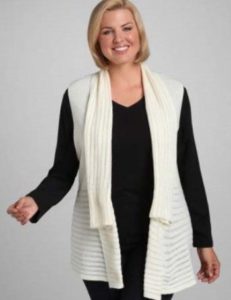 The main thing in a plus-size woman’s wardrobe is completeness and practicality. Clothing should be comfortable, loose-fitting, allowing you to hide some figure defects.
The main thing in a plus-size woman’s wardrobe is completeness and practicality. Clothing should be comfortable, loose-fitting, allowing you to hide some figure defects.
Don't forget that vertical stripes, raised lines, details visually reduce the volume, and horizontal ones emphasize it.
It is a mistaken belief that overweight women are required to wear clothes only in dark colors. For them Almost all colors are suitable, you just need to avoid bright shiny, iridescent textures.
Selecting a style and yarn for knitting (crocheting) a women's vest (short, long, openwork).
Choosing knitting tools
Crochet hooks
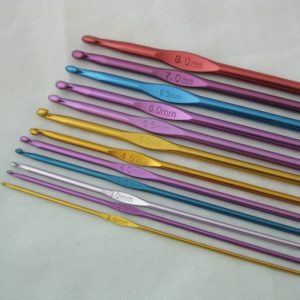 Hooks are short, used for regular knitting, and also elongated - for Tunisian knitting.
Hooks are short, used for regular knitting, and also elongated - for Tunisian knitting.
The hook can be made of plastic, metal, bone.
They differ in thickness and are divided by number.
Advice! The point of the hook should preferably be rounded so as not to prick your finger; if it is too sharp, treat it with sandpaper.
Knitting needles
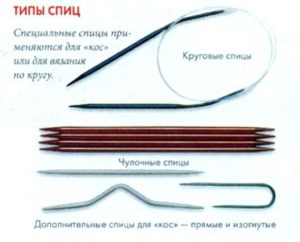 Knitting needles can be plastic, metal, wood or bone; recently, bamboo knitting needles have been gaining popularity.
Knitting needles can be plastic, metal, wood or bone; recently, bamboo knitting needles have been gaining popularity.
Important! We select hooks and knitting needles in accordance with the pattern and thickness of the thread, but each knitter knits with her own density, so even with the same hook, knitting needles, threads, the result may differ. Be sure to knit a sample, then calculate the number of stitches and loops (for knitting needles).
Selecting materials
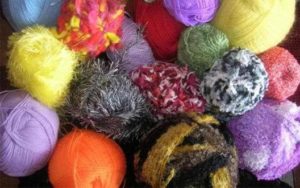 Yarn can be natural, synthetic and blended (semi-natural).
Yarn can be natural, synthetic and blended (semi-natural).
- Towards natural include linen, silk, cotton, as well as various types of wool: mohair, angora, alpaca, cashmere, merino and so on. Valuable natural fibers are mixed with viscose or acrylic thread. The disadvantages of these threads include their capriciousness and high cost.
- To popular synthetic materials include: acrylic, viscose, lurex. Acrylic has low hygroscopicity. Viscose is more expensive, but virtually free of the hassles of artificial materials.
Choosing a style
Vests come in various shapes and styles - straight, fitted, short, long.
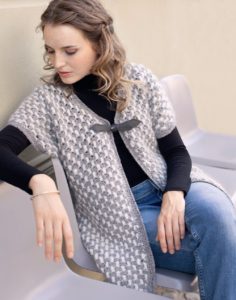 Fashionable styles this season:
Fashionable styles this season:
- village "soul warmer";
- bolero;
- imitation office jacket without sleeves;
- trapezoidal vests;
- elongated vests to mid-thigh or knee length;
- openwork vests (often made of shiny yarn with the addition of lurex).
Advice! Overweight women need to be careful with the bolero vest style, as it leaves the thighs or stomach, which are problematic for many, exposed.
Taking measurements for a vest
Vest patterns
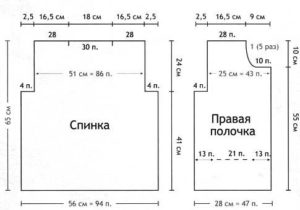 Knitting patterns are much simpler than sewing ones, since the knitted fabric is elastic, fits well, and is easy to slightly iron with a warm iron.
Knitting patterns are much simpler than sewing ones, since the knitted fabric is elastic, fits well, and is easy to slightly iron with a warm iron.
First, you should design a base pattern, and using it, making the necessary changes, build the desired pattern. Cut-out lines, fasteners, pockets, and shaped lines are drawn.
Advice! Depending on the choice of yarn and knitting pattern, the fit allowances vary. The thinner, fluffier the threads, and the more openwork, freer the pattern, the smaller the allowances.
For most models of vests, allowances range from 2 (for thin summer models) to 4 cm (for thick autumn and winter vests.)
Important! It is necessary to distinguish between a base pattern that fits tightly to the body, has no darts, cutouts, or shaped lines, and a product pattern that has all of the above.
Measurements for making a vest:
- Chest circumference. We pass the measuring tape under the shoulder blades and along the chest (without pulling the tape).
- Waist circumference. We measure in the thinnest part of the body.
- Hip girth. Measuring tape on the most protruding parts of the hips.
- Length of the product. From the 7th cervical vertebra in the center of the back to the desired level.
- Shoulder length. From the 7th cervical vertebra to the end of the shoulder.
- Back width. Along the shoulder blades from one intended armhole to another.
- Neck circumference. Around the neck along the jugular cavity.
- Neckline depth. From the shoulder line to the intended neckline.
- Front width. Along the protruding points of the chest from one armhole to another.
Based on the dimensions, we build a pattern or make changes to an existing ready-made vest pattern.
Knitting techniques
Texture patterns:
Vest with a simple braided pattern
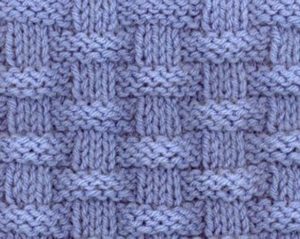 The front and back of this vest are knitted from the bottom edge. Iron the knitted pieces with steam through gauze or thin fabric.Then stitch starting from the side seams.
The front and back of this vest are knitted from the bottom edge. Iron the knitted pieces with steam through gauze or thin fabric.Then stitch starting from the side seams.
Using diagonal stocking stitch, make bindings for the neckline and armholes. Knitting these bindings begins when there are only three loops.
The expansion is carried out due to yarn overs on the loops of the front rows.
After receiving 10 loops, at the end of the front row, continue to increase, and at the end of the purl row, knit the edge stitch together with the one in front of it.
Steam the finished bindings and baste them to the vest.
Rapport:
The basis of the pattern is twenty loops (even number of six, plus two additional edge loops).
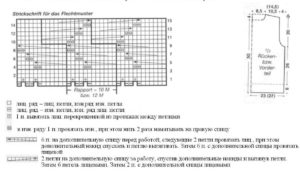
In the first row we use knit stitches.
In the second, subsequent rows - purl.
We begin the third row of the pattern: first, without knitting, we remove three loops onto an additional knitting needle, then we knit three loops, knit the loops from the additional knitting needle. Then repeat until the end of the row.
We knit the fifth and seventh rows with regular knit stitches (don’t forget about the even purl rows).
We start the ninth row with three knit stitches, slip the next three onto a separate knitting needle, then three knit stitches, then knit knit stitches from an additional knitting needle.
We knit the eleventh and thirteenth rows with facial loops.
Starting from the fifteenth row, we knit the pattern like the third.
Patterns with braids, plaits and diamonds
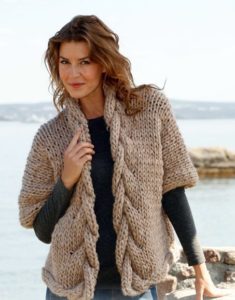 Vests knitted using the harness technique are a classic.
Vests knitted using the harness technique are a classic.
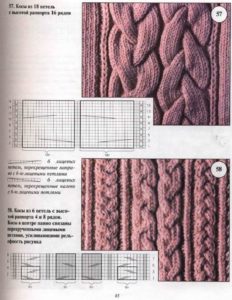 There are a lot of these patterns and patterns on the Internet and in knitting books; they look great on curvy women.
There are a lot of these patterns and patterns on the Internet and in knitting books; they look great on curvy women.
Models should be chosen with an elongated silhouette.
An additional knitting needle is required.
- Carrying two stitches is the basis of many patterns. Moving more stitches onto a separate needle or pin makes it possible to create braids, diamonds, and so on.
- Transferring three loops can be done in two ways - one loop passes over a pair of others, or two loops immediately move over a single loop. You can move left or right.
- Moving four stitches onto an additional needle gives us different types of strands. It is customary to frame it with purl loops.
Patchwork vest
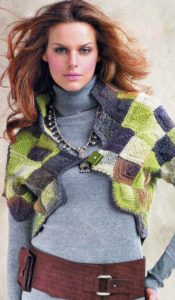 Such vests can be made in two ways:
Such vests can be made in two ways:
Link individual motifs. The paper pattern is cut into the required number of pieces, usually of different sizes.
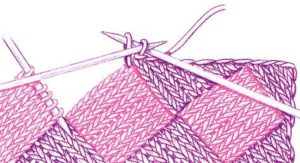 A motif is knitted according to the size of each of the different threads.
A motif is knitted according to the size of each of the different threads.
The vest blanks are swept away or ground down.
It is possible to leave space between motives.
Then fill it with decorative stitches.
Crochet Techniques
Bruges lace
The simplest version of this knitting is a special braid.
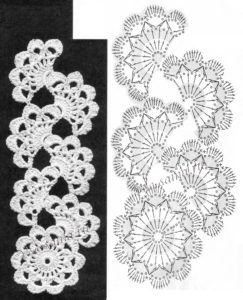 Between the pattern there are decorative fastening stitches.
Between the pattern there are decorative fastening stitches.
We knit the braid - Let's make a ring of three air loops, then insert a hook into this ring and grab the thread, we get a loop.
We will turn the braid from left to right, insert the hook under two loops, then tie these loops together.
Each time we insert the hook into the loops located on the left, one row lower, pull it out, and knit it together.
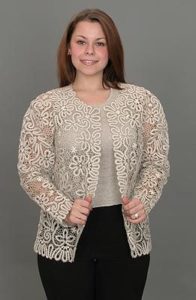 Roll the braid into a ball.
Roll the braid into a ball.
We iron the life-size vest pattern and lay it out on a flat surface.
We complete the drawing.
We baste the braid according to the pattern, with the embossed side facing down.
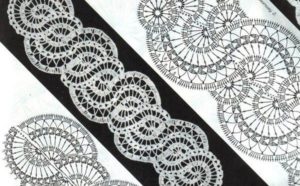 Connects the braid together with cross stitches.
Connects the braid together with cross stitches.
Carefully remove the paper.
We sew the details.
If necessary, we carry out finishing.
Filet lace
Fillet lace is characterized by two main elements - an air loop and a double crochet. The hook is very smooth, without roughness.
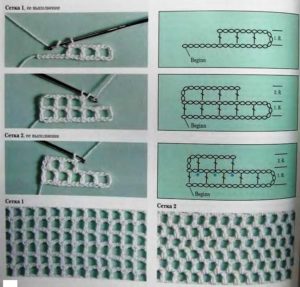
By alternating these elements, a mesh is obtained (column - air loop - column).
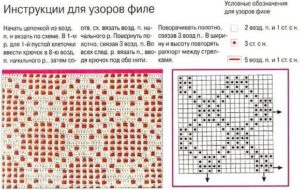 The vest will be worked from the bottom up.
The vest will be worked from the bottom up.
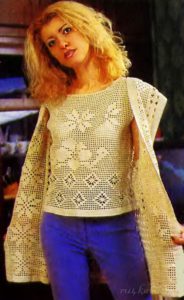 It is possible to knit a vest without a pattern, only with regular fittings.
It is possible to knit a vest without a pattern, only with regular fittings.
It is necessary to draw a pattern in advance: the columns provide a solid canvas, and the air loops create “windows.”
Important: The first row will always consist of double crochets.
A knitted vest will become an indispensable wardrobe item for a plump woman.
Emphasizes advantages and hides disadvantages.
Knowing how to hold a hook or knitting needles in your hands, you will always look great.


 0
0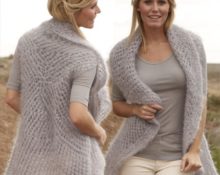
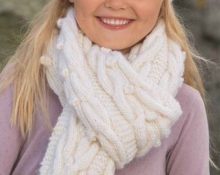
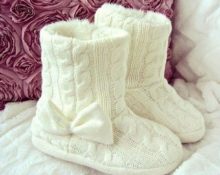
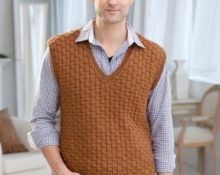
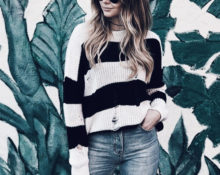
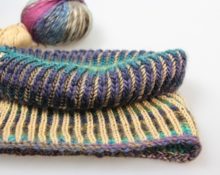

The article is called “Knitted vests for OBVIOUS women,” so where are they? Where are the fat women, everyone in the photo is skinny, why should we fool our heads? Could the pictures be posted on the topic? Disgusting.